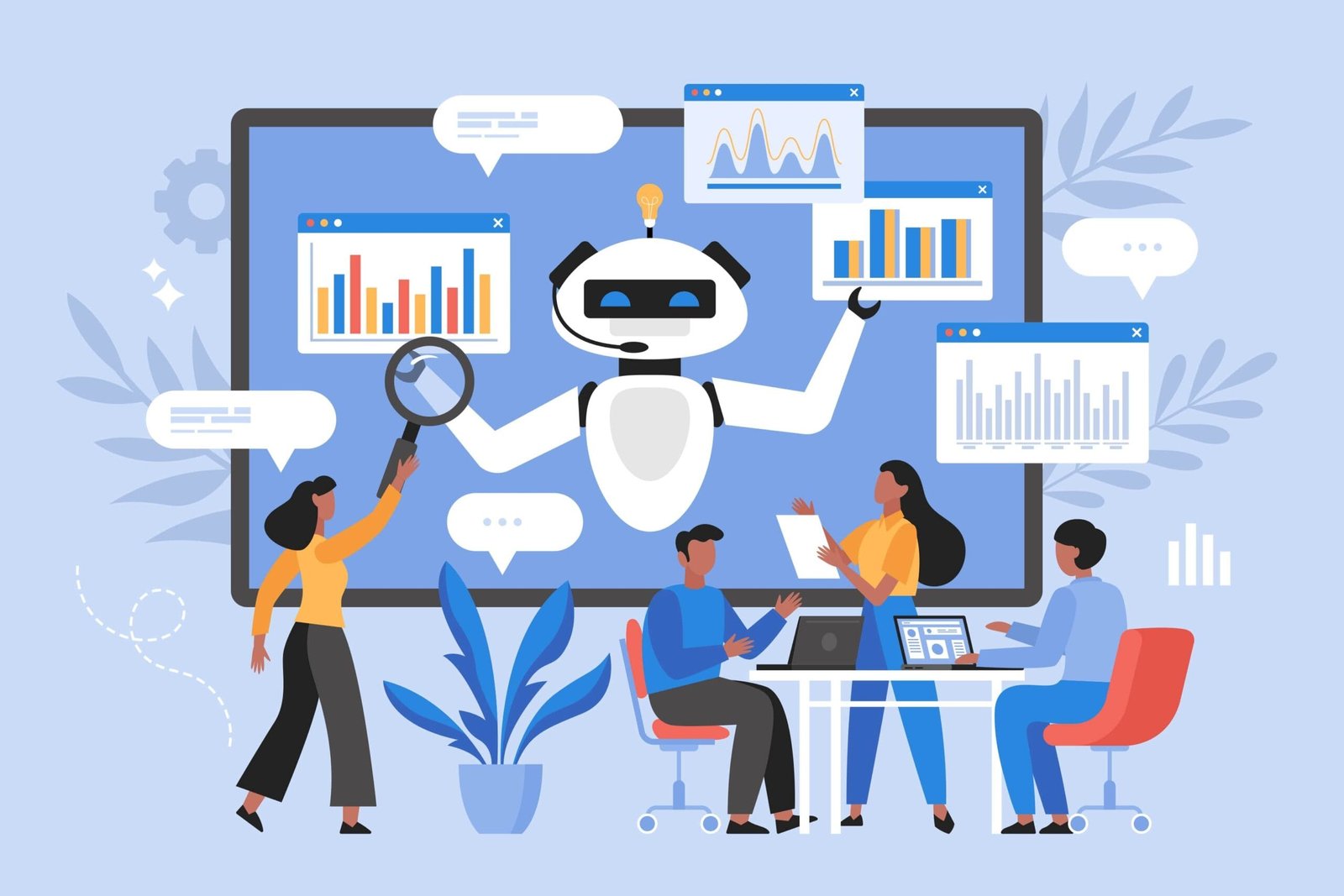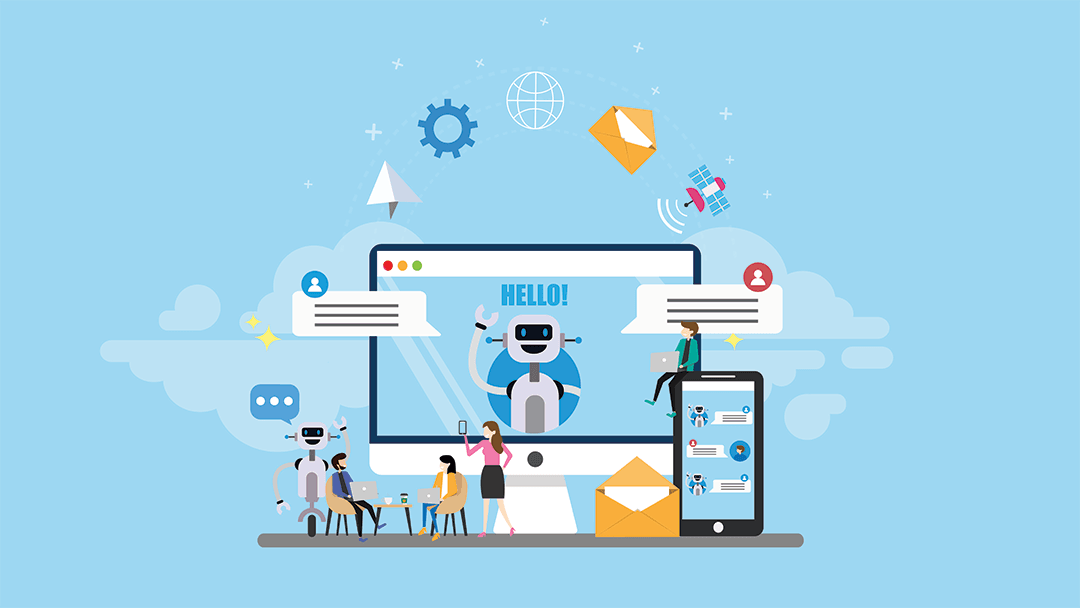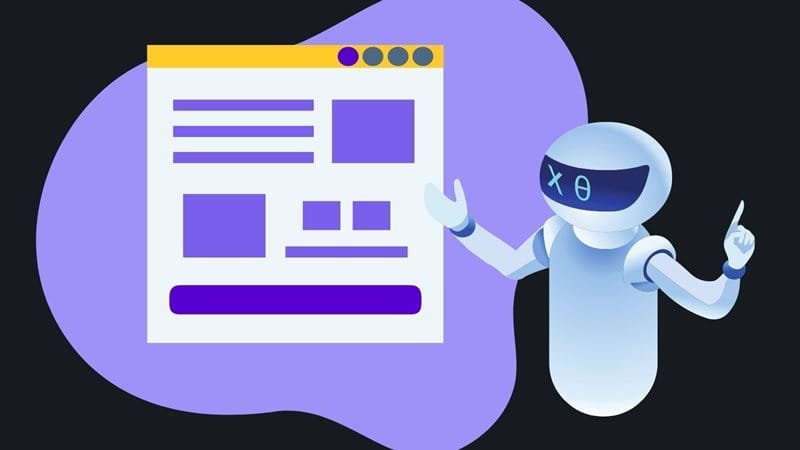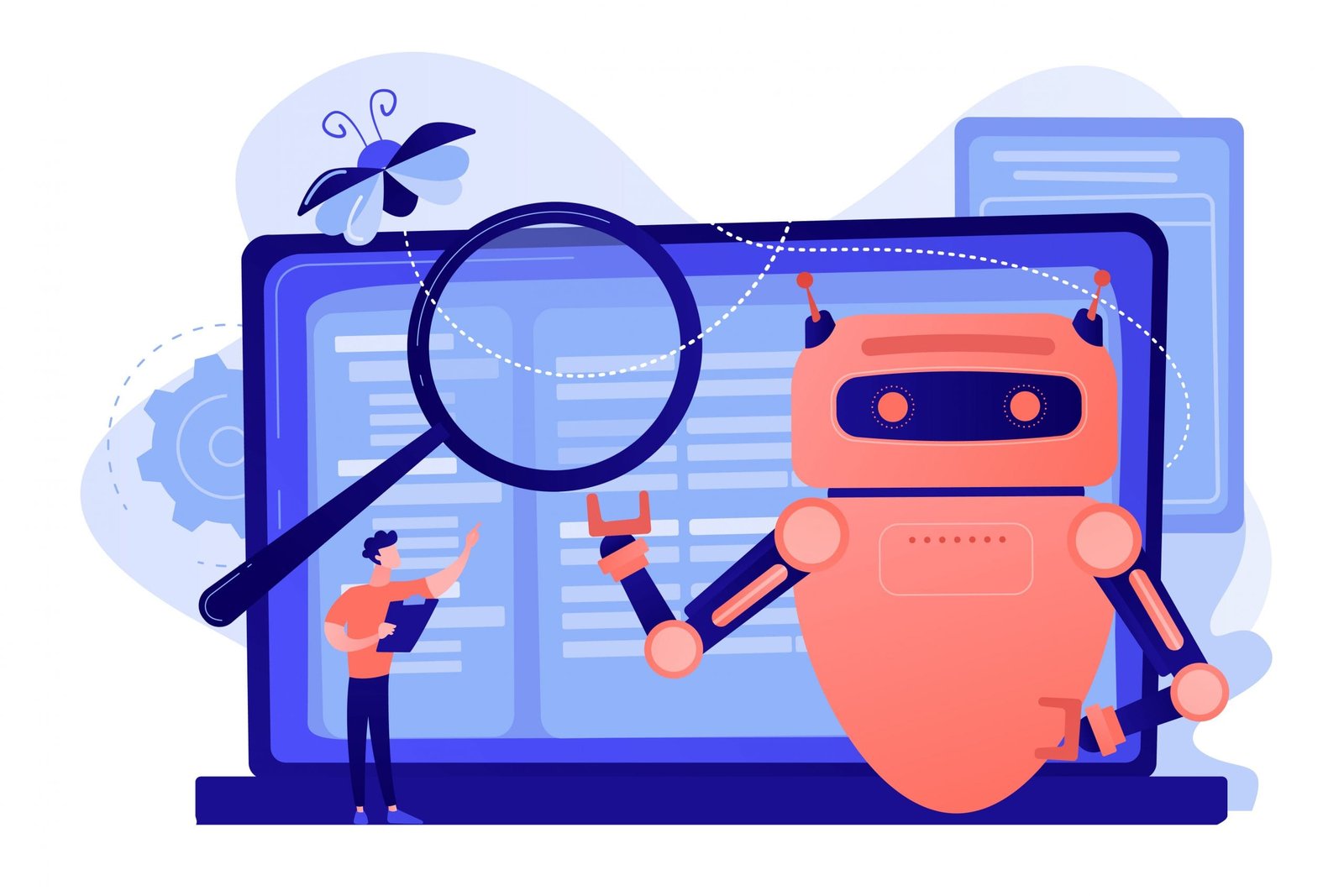Artificial Intelligence (AI) is reshaping the marketing landscape, and ChatGPT is at the forefront of this transformation. As a powerful tool fueled by machine learning, ChatGPT simplifies and enhances various aspects of your marketing campaigns—from content creation to social media marketing. Whether you’re a small business or a large organization, ChatGPT can revolutionize how you connect with your target audience.
Gone are the days of spending hours brainstorming social media captions or fine-tuning ad copy. With ChatGPT, you can generate engaging, high-quality content in minutes. This versatile tool offers personalized solutions tailored to different customer segments, ensuring your marketing efforts resonate with your audience. Dive into the world of ChatGPT and discover how to upgrade your campaigns, save time, and achieve better results with AI-driven insights.
Exploring the Potential of ChatGPT in Marketing
ChatGPT is changing the game for marketers everywhere. It can understand and create text that feels human. This opens up many new options, like making great marketing copy and personalizing how businesses talk to customers.
You can easily come up with creative ideas, change your messages for different customer groups, and automate boring tasks. ChatGPT makes it easier for marketers. It lets them work smarter instead of harder. By handling routine jobs, it gives them more time to plan and carry out their strategies.
The Role of AI in Modern Marketing Strategies
Artificial intelligence is not just a thing of the future; it is important in today’s marketing. AI changes how businesses reach their target audience with tools like predictive analytics and personalized recommendations.
ChatGPT is a powerful tool in AI that helps this change. It allows marketers to look at a lot of data, find valuable insights, and make choices based on that data. By knowing customer behavior, predicting trends, and personalizing marketing messages, businesses can stand out in a crowded market.
Still, we should remember that AI tools like ChatGPT are there to support human marketers, not replace them. The true strength comes from mixing the creativity and smart thinking of human marketers with the data insights and speed of AI.
Understanding ChatGPT’s Capabilities and Limitations
ChatGPT is a strong language model. It can do many impressive things. For example, it can create different types of text, translate languages, and summarize information. But, it is important to use this technology carefully. We should recognize both what it can do and where it falls short.
One main shortcoming is that ChatGPT’s knowledge comes from the data it was trained on. There is a cutoff point for this data. Because of this, it might not always have the latest news or trends in different industries. Also, while it can write in a way that seems human-like, it does not really understand feelings or concepts.
So, it is important for humans to review and edit its output. This will help make sure that the information is correct, original, and matches the brand voice. When marketers know these limits, they can use ChatGPT’s power in a good and responsible way.
Preparing to Use ChatGPT for Marketing
Before getting into the interesting world of using ChatGPT for marketing, you need to set things up well. This means getting your team on the same page, setting clear goals, and knowing exactly how ChatGPT can be helpful.
Think of this as getting ready for a trip. You wouldn’t go on a road trip without planning your route, packing what you need, and making sure your car is ready. The same goes for using ChatGPT; you need to think about your marketing goals, what resources you have, and the challenges you might face.
Identifying Your Marketing Goals
Start by listing your marketing goals. Do you want to raise brand awareness, get more leads, or boost sales through focused campaigns? Setting clear objectives will help shape your ChatGPT prompts. It will also let you check how well you are doing.
Next, think about your target audience. ChatGPT can assist you in creating very personalized marketing messages for various customer groups. Knowing your ideal buyer persona, along with their needs, challenges, and online habits, will help you create prompts that really connect with your audience.
Keep in mind, the clearer your goals and target audience are, the better ChatGPT will be at generating useful content and ideas that fit your marketing plan.
Gathering Necessary Tools and Resources
ChatGPT can improve your marketing tools and strategies. Think about how it can help with your current content marketing, social media management, andemail marketing.
You can use ChatGPT to create fun social media captions. It can help you write catchy email subject lines or think of fresh ideas for your next blog post. This tool can make your work easier, reduce repetitive tasks, and boost your content creation.
Feel free to try different methods and mixes to find out what fits your specific needs and marketing goals.
Beginner’s Guide to Upgrading Your Marketing with ChatGPT
Now that you know what ChatGPT can do and have your marketing tools ready, it’s time to see how to use this powerful tool effectively.
If you are new to marketing with AI or just getting started with ChatGPT, this beginner’s guide will give you helpful tips. You will find simple steps to smoothly add this technology to your current marketing campaigns.
What You Need to Get Started?
The charm of ChatGPT is in its ease of use. To start, you just need to know your marketing goals, your target audience, and be open to trying new things. After that, making good ChatGPT prompts is important to unlock its full potential.
Think of prompts as directions you give to ChatGPT to get the results you want. For example, if you want a catchy headline for your blog post, you can say: “Give me five eye-catching headlines for a blog post about the benefits of [your product or service].”
Always remember that the more clear and detailed your prompts are, the better the content will be. Don’t be afraid to add context, define your target audience, and explain the tone and style you want.
How ChatGPT Integrates with Existing Marketing Tools?
One of the biggest benefits of ChatGPT is how adaptable it is. It works well with many marketing tools and platforms. This can make your tasks easier and better. For instance, you can link it to your social media management tool. This lets you schedule and automate posts while getting catchy captions created by ChatGPT.
You can also connect it with your email marketing platform. This helps you write personalized email series for different customer segments. ChatGPT can help make strong landing pages that increase conversions. It does this by looking at user data and creating convincing text.
By adding ChatGPT to your current marketing setup, you can improve how you work. This change will help you concentrate more on your main goal: reaching your marketing targets.
Step-by-Step Process to Enhance Marketing Campaigns
Let’s simplify how to improve your marketing campaigns using ChatGPT. Here are some simple steps to help you use this new technology effectively.
Keep in mind that every campaign is different. You should change these steps to fit your goals and the people you want to reach.
Step 1: Setting Up ChatGPT for Your Marketing Needs
Start by getting to know ChatGPT’s screen and what it can do. Look at the different settings. Try out different prompts and see how the tool answers your requests.
Next, figure out what content creation tasks you want ChatGPT to help with. This could include social media updates, email newsletters, website copy, or ad copy. Knowing exactly what you want will help you create better prompts.
Lastly, think about making separate ChatGPT spaces for different marketing campaigns or projects. This will help you stay organized and make sure your content fits each project well.
Step 2: Creating Custom Prompts for Targeted Campaigns
Crafting good custom prompts is very important. It helps make sure that ChatGPT gives you the right answers. When you make your prompt, think about adding keywords, stating your target audience, and sharing what your goal is for the campaign.
For example, if you are starting a social media campaign to launch a new product, your prompt might look like this:
- Target Audience: Share a quick description of your ideal customer (for example, “Tech-savvy millennials who care about sustainable living”).
- Campaign Goal: Explain what you want to achieve (like, “Get people to pre-order our new eco-friendly smartphone”).
- Desired Tone: Choose the kind of tone you want (for instance, “Enthusiastic, informative, and fun”).
Step 3: Analyzing and Interpreting ChatGPT Outputs
It’s important to see ChatGPT’s outputs as a first step, not the final version. Always check, verify, and edit the generated content before using it in your marketing.
Look at the outputs to see if they fit your needs, are correct, and match your brand voice. Feel free to make changes, rewrite parts, or even remove outputs if they aren’t good enough.
ChatGPT can give useful data to help with your marketing choices. Notice the patterns, trends, and ideas it shows. These could give you good insights on your target audience or how well your campaign is doing.
Step 4: Implementing ChatGPT Insights into Campaign Strategies
Once you have looked at ChatGPT’s outputs and made them better, it’s time to use what you learned in your campaign plans. This might mean updating your website copy, improving your social media content calendar, or changing your ad campaign targeting based on the data from ChatGPT.
Make sure to watch how your campaigns perform after you make these changes with ChatGPT. This will help you see how well those adjustments work and if you need to make more updates.
Keep trying out different ChatGPT prompts and strategies. This will help you create better and more effective marketing campaigns. Don’t hesitate to test new ideas, learn from them, and change your approach based on what works.
Advanced Uses of ChatGPT in Marketing
As you get better at using ChatGPT for simple marketing tasks, think about trying its more advanced features. These uses show how powerful AI can be. They expand your creativity and help you get great marketing results.
Always keep in mind that the aim is to keep finding creative ways to use ChatGPT. This will help you connect with your audience in a better way and meet your marketing goals more easily.
Personalizing Customer Communications
Customers today want experiences that fit their own needs and likes. You can use ChatGPT to meet these wants by making personalized marketing messages at different points of contact.
For example, you can use ChatGPT to create unique email subject lines that grab the reader’s attention. This can make more people open your emails. You can also use ChatGPT to make content in your emails that changes based on what users do. This makes the experience more relevant and interesting.
Also, ChatGPT can help you in personalizing your customer service. It can create chatbots that give quick, useful answers while keeping your brand voice and tone.
Automating Content Creation for Social Media
Maintaining a strong and fun social media presence can take a lot of time. ChatGPT makes this job easier. It helps keep your brand active and on people’s minds without needing you to work hard all the time.
You can use ChatGPT to:
- Create creative captions and posts: It helps you beat writer’s block and keeps your sfocial media feed lively and interesting.
- Plan content ahead of time: This helps you set up your social media calendar. Make sure your posts go out on time to reach more people and get more engagement.
- Customize content for each platform: Adjust your messages and tone to match the audience of each social media site.
By automating content creation and scheduling, you’ll save time and energy. This allows you to focus on planning, engaging with your community, and other important parts of your social media marketing campaigns.
Measuring the Success of ChatGPT-Enhanced Campaigns
Measuring how well your marketing campaigns work is important. It helps you know what your audience likes and how to make your future efforts better. If you use ChatGPT in your plans, you should track key performance indicators (KPIs). These KPIs show how ChatGPT is impacting your campaigns.
When you look at these metrics, you will get valuable insights. You will understand how ChatGPT affects your campaign performance. This will help you find areas where you can improve and get better results.
Key Metrics to Watch
The key metrics to watch will vary depending on your marketing campaign goals. Still, here are some common KPIs you can think about:
- Website Traffic: Look for increases in organic traffic. Check user engagement measures like bounce rate and time spent on the page.
- Lead Generation: Keep an eye on how many leads you get, the cost for each lead, and how many lead forms or landing pages are turned into customers using ChatGPT-written text.
- Social Media Engagement: Review numbers like likes, shares, comments, and click-through rates to see how well your ChatGPT-driven social media content is doing.
- Email Marketing Performance: Track open rates, click-through rates, and the number of conversions from emails that use ChatGPT-created content.
Metric | Description |
Website Traffic | Check how much your website visitors grow after using ChatGPT improvements. |
Lead Conversion Rate | Look at what percent of leads turn into paying customers. |
Social Media Engagement Rate | Monitor how much interaction (likes, shares, comments) your social media posts get. |
Email Open and Click-Through Rates | See how many people open your emails and click on links in them. |
Adjusting Strategies Based on Data Insights
Data analysis is a process that repeats itself. When you collect more information about how well your ChatGPT-enhanced campaigns are doing, be ready to change your plans based on what you learn. This might mean adjusting your ChatGPT prompts, trying out different keywords or content types, or looking more closely at who your target audience is.
For instance, if you see that a specific style of social media content made by ChatGPT is doing much better than others, think about making more content like that. If your email open rates are low even after using ChatGPT for the subject lines, try using different prompts or voices.
The important thing is to stay open and ready to change. Keep learning from the data and improving your methods to make ChatGPT work better for achieving your marketing goals.
Unlocking the Power of ChatGPT for Exceptional Marketing Campaigns
Artificial intelligence is no longer a futuristic concept—it’s a reality transforming how businesses approach marketing efforts. ChatGPT, as a powerful tool, enables businesses to automate repetitive tasks, create personalized content, and engage audiences with precision and creativity.
Whether you’re a small business seeking to streamline your operations or a larger company aiming for scalable solutions, the power of AI can drive measurable results. At Mastodon Marketing, we specialize in leveraging tools like ChatGPT to craft strategies that resonate with your audience and achieve your goals. Let us help you unlock the full potential of AI-driven marketing to elevate your campaigns today.
Frequently Asked Questions
How can I ensure ChatGPT-generated content aligns with my brand voice?
To keep your brand consistent, share examples of your marketing copy with ChatGPT. Tell it the tone of voice you want in your prompts. After ChatGPT gives you content, check and edit it carefully before you publish. Staying true to your brand will improve your marketing efforts and connect more with your audience.
Can ChatGPT help in creating marketing strategies for specific industries?
ChatGPT is a useful tool, but it’s important to do good market research. You need to adjust its responses to fit the needs of your industry. When you use ChatGPT, make sure to give it context in your prompts. Think of it as a starting point instead of the only resource for creating your marketing strategies.
What are the common pitfalls to avoid when using ChatGPT in marketing?
Common mistakes are depending only on ChatGPT without having any human check, ignoring the need to verify facts, and not updating strategies based on how the campaign is doing. Always remember to use it as a tool to improve your content marketing, not to take the place of your content marketing or your overall marketing strategy.
How frequently should I update the prompts I use with ChatGPT?
Regularly change your ChatGPT prompts. This helps keep your content fresh and interesting. Add new keywords and change the tone as needed. Also, keep it in line with your marketing changes for the best results in your content creation process.
Is there a way to measure the ROI of using ChatGPT in my marketing efforts?
To measure ROI, you should keep an eye on key performance indicators (KPIs) that ChatGPT affects. This includes looking at website traffic, lead generation, and conversion rates. Also, research your campaign closely. Compare how things were before and after you used ChatGPT. This will help show its effect on your marketing efforts.



